The remarkable achievements of Joseph Lade Pawsey (OW1923)
Joseph Pawsey was a country boy who grew up in the Western Districts of Victoria among the small farming communities of Willaura, Coleraine, Hamilton and Camperdown.
A curious and intelligent boy, young Joe entered Wesley College on a government scholarship in 1923 at just 14 years of age and went straight into sixth form. He excelled during his time at Wesley, gaining further scholarships which enabled him to continue his studies at university after graduating.
He attended the University of Melbourne, completing a Bachelor then Master of Science in 1931, before going on to attain a PhD from Cambridge University in the UK in 1934.
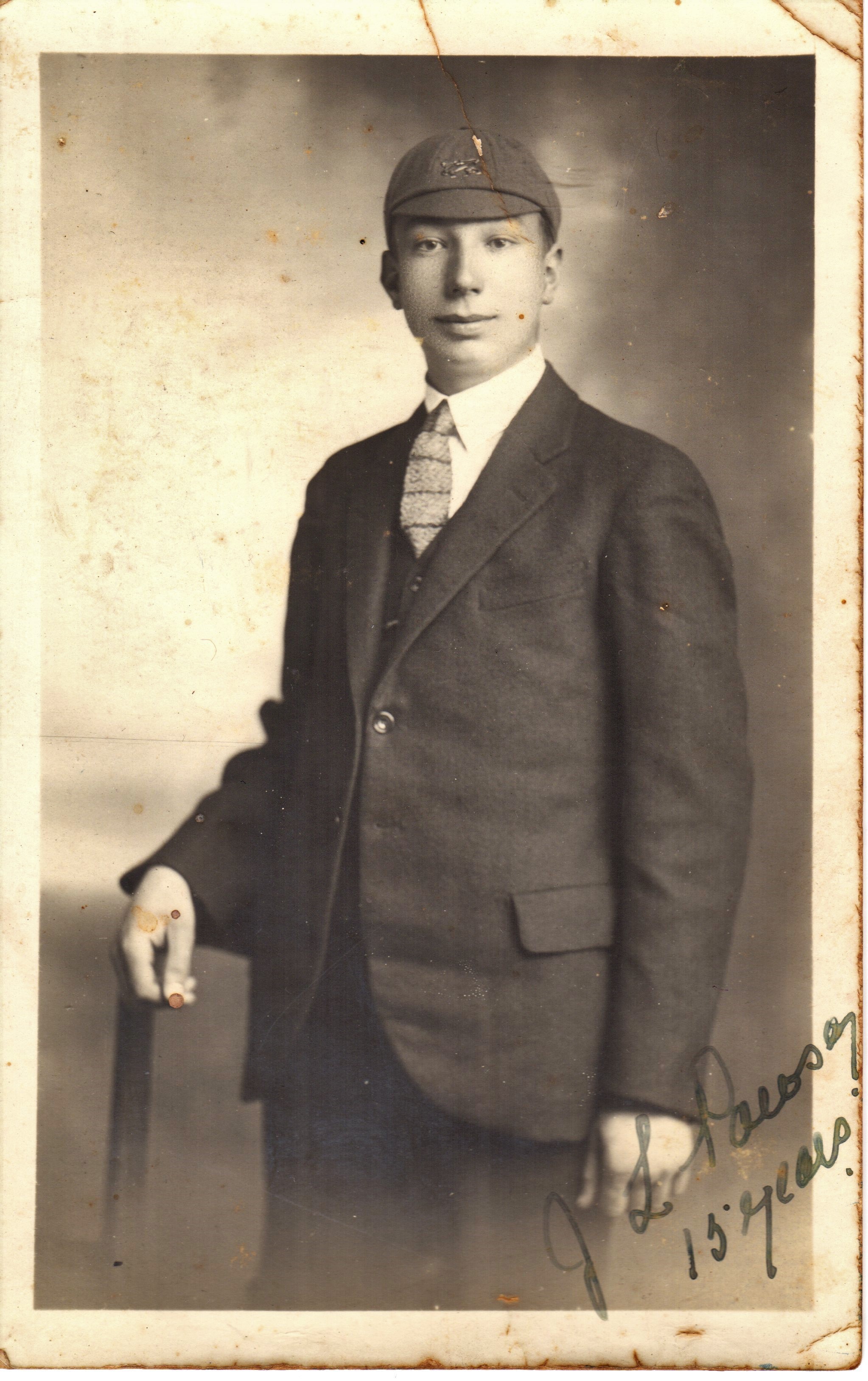
Early days of his career
Before the war, Pawsey worked as a Physicist in London with EMI (Electrical and Musical Industries Ltd) on the first effective V broadcast system. He married Canadian Greta Nicoll in 1935 and returned to Australia in 1940, joining the Radiophysics Laboratory established by the CSIR Sydney to develop and manufacture radar equipment.
As the laboratory’s most senior and respected scientist, Pawsey had seen secret WWII reports which described how radar sets had sometimes been jammed by interference from radio waves, thought to be coming from the sun, and possibly, related to the appearance of sunspots. He tried to investigate these reports in 1944, using a small aerial mounted outside a laboratory window. Although this makeshift attempt failed, his curiosity had been aroused.
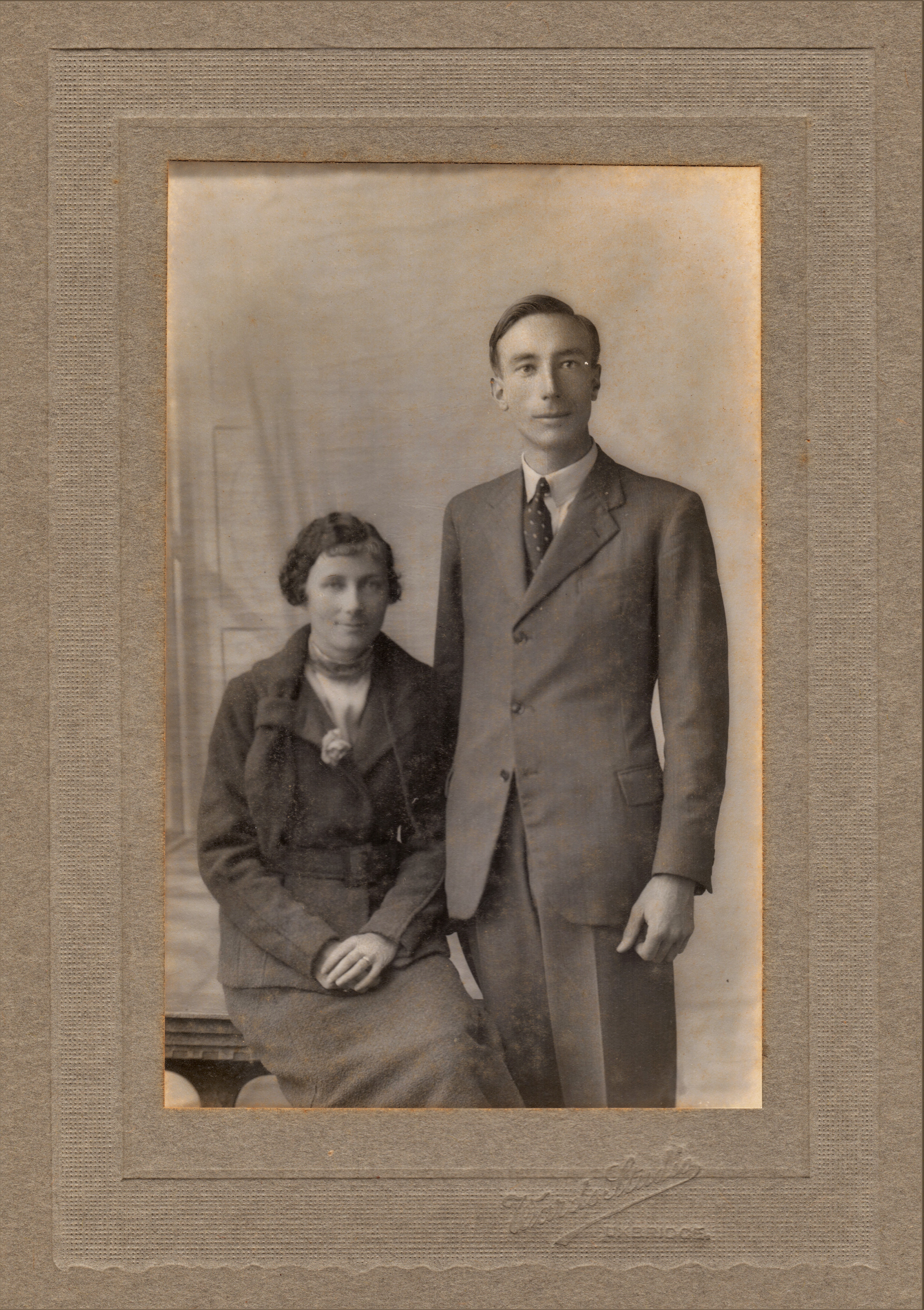
Discoveries about the Sun
As the war drew to an end, Pawsey’s team were encouraged to turn their attention to peacetime projects. On 3 October 1945, Pawsey began new observations of the Sun using a radar aerial at Collaroy Plateau in NSW. Success was immediate with steady radio emissions recorded, even though it was clear that sunspot activity was not the only cause. The emission seemed to indicate that regions of the Sun had temperatures as high as one million degrees Celsius.
Pawsey’s results were greeted with disbelief until it was realised that he and his team had measured temperatures not on the sun’s surface, but in its corona (the outermost part of the Sun’s atmosphere usually hidden by the bright light of its surface). These studies marked the beginning of a new branch of science which he named ‘Radio Astronomy’ which researches and measures the different frequency of radio waves coming from the Sun, our Milky Way Galaxy and beyond.
A chart recording obtained in 1947 (see below) shows an outburst of radio waves from the Sun at three different radio frequencies (200 MHz, 100 Mhz and 60 MHz.) (Photo: CSIRO)
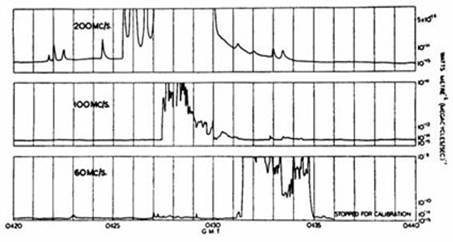
The birth of radio astronomy
Pawsey developed a way of measuring radio emissions from the Sun and galaxies using the principal of an interferometer. An aerial was placed on a cliff-top, facing out to observation points south of Sydney Heads. At sunrise, the aerial would pick up two signals, one direct from the sun and the other reflected from the surface of the sea. The two signals could then be combined to form an interference pattern, from which information could be obtained about the size and position of the source of the radiation.
Pawsey’s timing in October 1945 was incredible, as within a few days, one of the largest groups of sunspots ever recorded began its slow transit of the Sun’s disc, causing major disruptions to radio communications on Earth.
Pawsey‘s discovery that the strong radio emission originated from the vicinity of the sunspots and his use of the interferometer are arguably his most important contributions to radio astronomy.
Worldwide recognition
As Assistant Chief of the Division of Radiophysics from 1951, his research, and that of the teams he led, won recognition and praise from around the world and established Australia as a world leader in this emerging field of science. But Pawsey was honest and humble, publishing relatively few papers himself and sacrificing his own research to support his teams. He was always scrupulous in acknowledging his colleagues’ achievements yet somehow found time to write with RN Bracewell ‘Radio Astronomy (Oxford, 1955) the first comprehensive text on the subject.
In 1953, he was awarded the Lyle Medal by the Australian Academy of Science for his ‘outstanding research accomplishments’ and was invited to give their inaugural Matthew Flinders lecture. In 1954, he was made a founding Fellow of the Australian Academy of Science and elected Fellow of the Royal Society (FRS) (London) that same year, winning the Hughes Medal in 1960 which ‘recognises an original discovery in the physical sciences.’ He was also conferred an honorary Doctor of Science from The Australian National University in 1961. Perhaps the most unusual of all his awards is the naming of an ‘impact crater’ on the far side of the Moon after him, a unique honour for a truly outstanding scientist.
In late 1961, Pawsey accepted an appointment as Director of the recently established National Radio Astronomy Observatory at Green Bank in the US but fell ill before he could take up the role. He died from a cerebral tumour in Sydney in November 1962 at just 54 years of age.
An extraordinary life
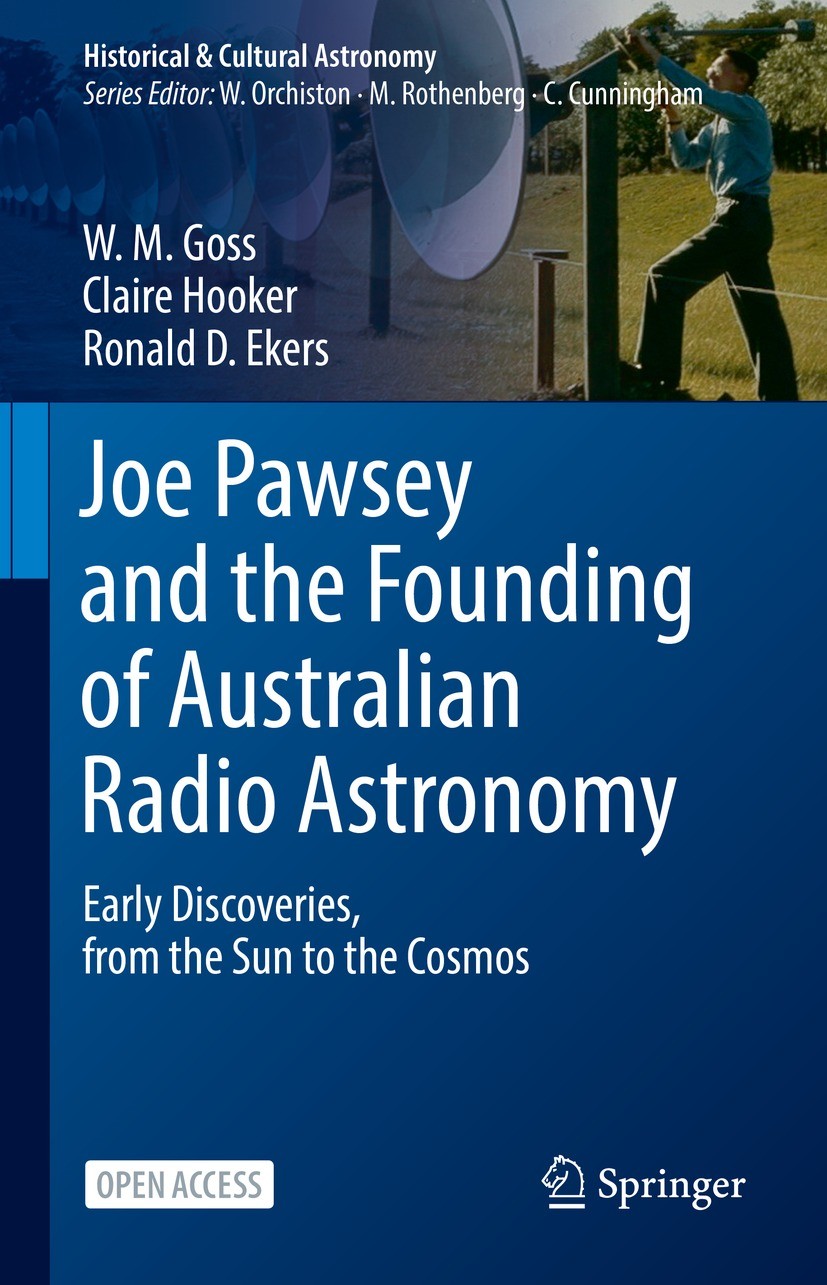 A biography about his achievements, Joe Pawsey and the Founding of Australian Radio Astronomy by W M Goss, Claire Hooker and Ronald D Ekers, has recently just been published and is based on information drawn from research gathered by the author and co-authors from worldwide archives and added to from the archive his son, Hastings Pawsey, inherited from his parents.
A biography about his achievements, Joe Pawsey and the Founding of Australian Radio Astronomy by W M Goss, Claire Hooker and Ronald D Ekers, has recently just been published and is based on information drawn from research gathered by the author and co-authors from worldwide archives and added to from the archive his son, Hastings Pawsey, inherited from his parents.
The book was launched in July at the Pawsey Supercomputing Centre in Perth, a world-class, high-performance computing facility accelerating scientific discoveries for Australian researchers. Other launches will follow in the USA in September 2023 and Sydney in early 2024.
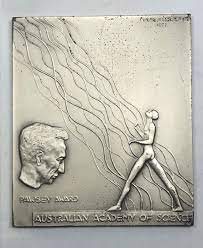 Pawsey’s work continues to be commemorated with the Pawsey Medal (instituted and first awarded in 1967 by the Australian Academy of Science) presented annually in recognition of outstanding research in physics by an Australian scientist early in their career (up to 10 years post-PhD).
Pawsey’s work continues to be commemorated with the Pawsey Medal (instituted and first awarded in 1967 by the Australian Academy of Science) presented annually in recognition of outstanding research in physics by an Australian scientist early in their career (up to 10 years post-PhD).
Coincidentally, the Committee who decides this award is currently chaired by our own Chair of Wesley College, Professor Rachael Webster AO FAA, who said, ‘Radio astronomy is one of the most internationally recognised areas in Australian science and will remain centre stage with the construction of the new radio telescope which forms part of the Square Kilometre Array, an intergovernmental international radio telescope project being built in Australia and South Africa. Joseph Pawsey might be considered the “father” of Australian astronomy. What a wonderful legacy stemming from a Wesley education.’
Do you have something to contribute?
We often receive requests from family historians and welcome the opportunity to add information about past students, families and events to our database. If you have information that you would like to share or something of historical significance that you would like to donate to the Wesley community, please contact archives@wesleycollege.edu.au
Margot Vaughan
Curator and Archivist
Additional information supplied by Hastings Pawsey, Australian Dictionary of Biography and Encyclopedia of Science.
